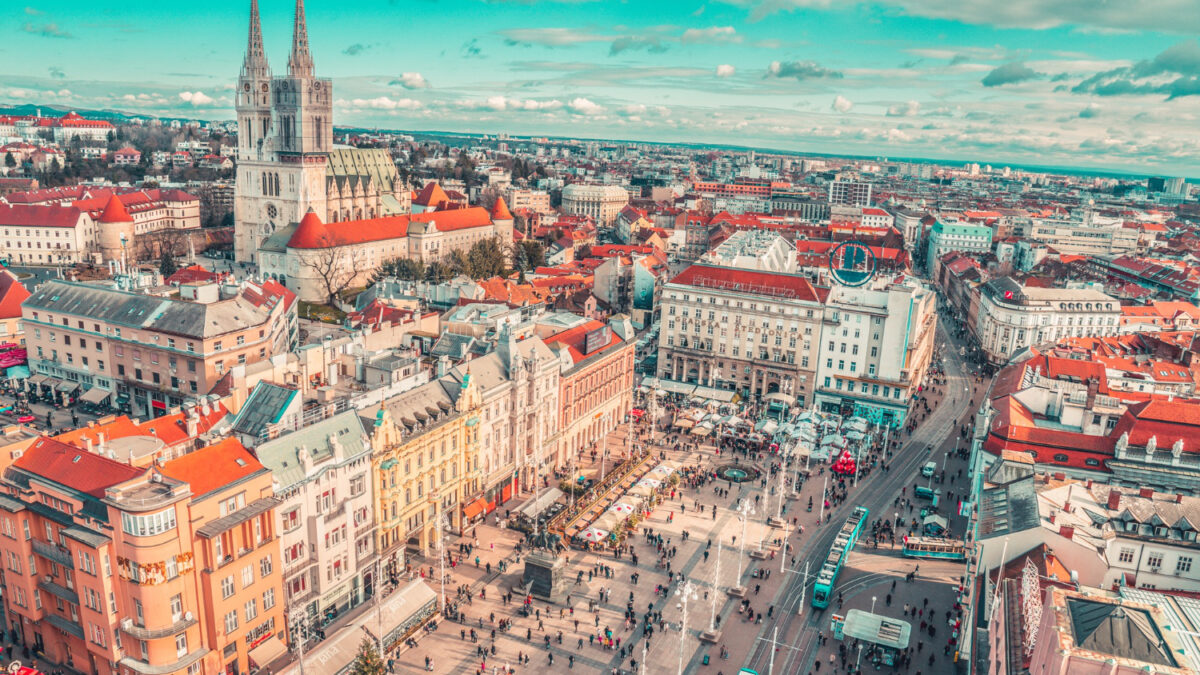
Lighting for business premises: How the Corda pendant shaped the identity of DPD City Depot
29. July 2025.
Why magnetic rails can be a problem if you install them yourself
26. August 2025.A LOOK INTO THE PAST How and when electric lighting arrived in Zagreb
Zagreb resisted the introduction of electric public lighting for a long time. Although citizens first saw an electric light on the corner of Gundulićeva and Ilica in 1877, the city authorities at the time continued to trust gas lamps. Despite the advice and visionary proposals of Nikola Tesla, who in 1892 proposed electrifying the city and building a hydroelectric power plant, the interests of the gas company and the costs of new systems slowed down the changes. It was not until November 5, 1907, that a turning point came – Zagreb received its first public electric lighting, and at that moment stepped into the modern era.
This change was not only a technical breakthrough, but also a cultural and social event. The city streets, which had been illuminated by flickering gas lamps for decades, suddenly shone with light that was stronger, more stable, and safer. Electrification meant not only new technology, but also a different way of life. Shops could stay open longer, social life took place later in the day, and safety on the streets was greater. The introduction of electric lighting became a symbol of modernization, an indication that Zagreb wanted and could follow the trends of the great European metropolises. Citizens recognized electric light as a sign of progress and optimism, while the city government finally began to invest in the infrastructure that was changing the face of the city.
The first metropolitan splendor
That day at 6:30 p.m., electric lamps lit up one after another from Frankopanska Street, across Ilica and Ban Jelačić Square, all the way to Praška and Zrinjevac. Citizens watched in wonder at the new light that illuminated the city. Newspapers at the time wrote that Zagreb had finally acquired a “metropolitan appearance.” Electricity was produced by Munjara, the city’s first power plant, located at the end of Vodovodna Street. The initial power of 0.8 MW was sufficient for 334 street lamps. The number of consumers grew day by day. It is particularly significant that shortly after the lighting, key city systems – the water supply system, and from 1910, the tram – also began to use electricity.
The moment the lamps were turned on, it was an event that was talked about for days. For the citizens, electric light was a true miracle. A light that did not smoke, did not flicker, and did not go out in every wind. The lightning rod played a key role, becoming a symbol of the city’s progress and the pride of the people of Zagreb. The central office, located in Gundulićeva, became the center of management of the new system, and the 22 employees were the first pioneers of the electrification of the city. Thus, in its first years, Zagreb lighting brought new energy and rhythm to urban life. Soon, the surrounding streets also got their lamps, gradually entering the European league of cities that recognized the power of light in shaping everyday life.
A legacy that still shines
Zagreb already had gas lighting in 1863, but it was weak and unreliable. For this reason, the arrival of electric light was seen as a real revolution. Lighting Zagreb was thus not only a technical innovation, but also a symbol of entering a new century and the modernization of everyday life. What began on the stretch from Frankopanska to Zrinjevac soon became the standard for the entire city. Today, that moment is an important reminder that every great change comes after long discussions, interests, and obstacles. But once it happens, it shapes generations to come.
The value of that historical moment is still reflected today in the way we experience light in urban spaces. Lighting is not only functional, it shapes the atmosphere of the city, gives it character and creates identity. The introduction of electric lighting in Zagreb was just the beginning of the journey towards increasingly sophisticated forms of public and private lighting. What seemed like an incredible innovation at the time, we take for granted today. However, the lesson remains that every new technology is initially met with distrust, and later becomes an indispensable part of life. The history of Zagreb’s lighting is therefore not just a story about lamps, but also a story about the human desire for progress and the courage to step into the unknown.
We are happy to answer all your questions!
Use the form below and ask anything you want to know.
If you need an official offer, choose: company






